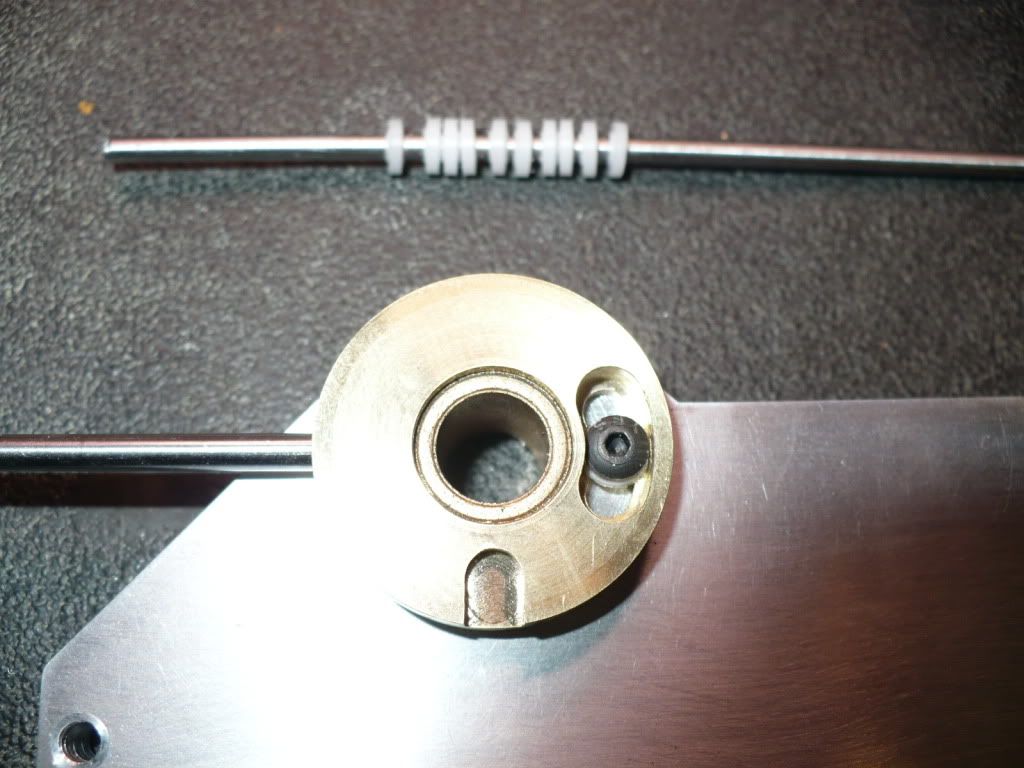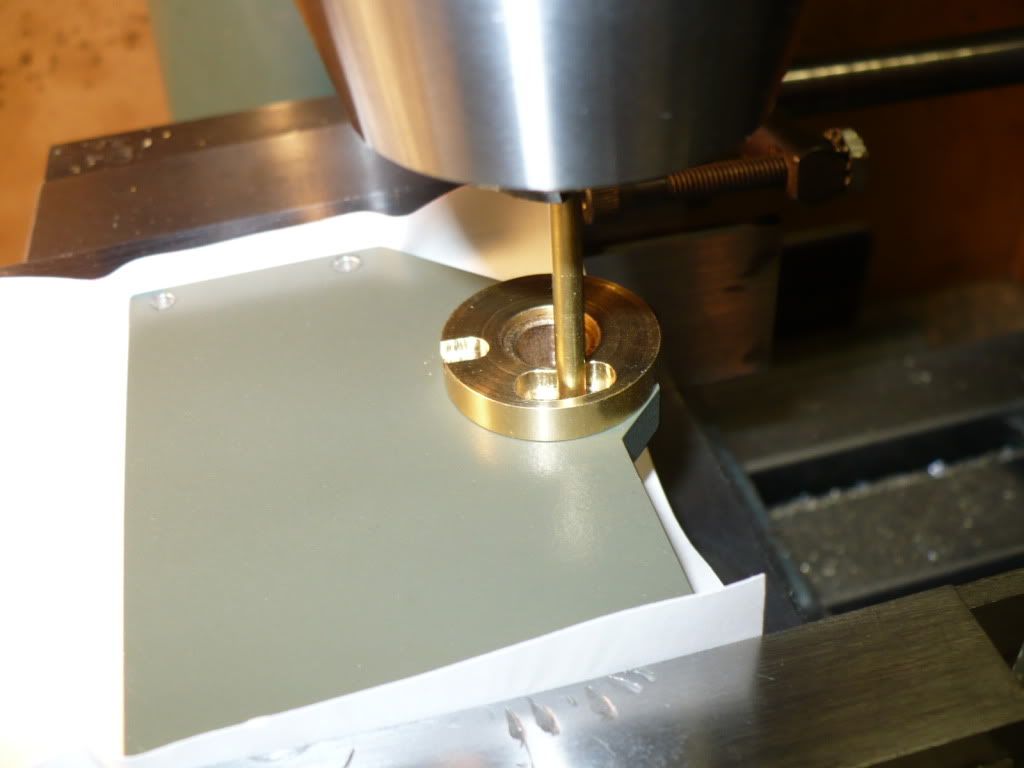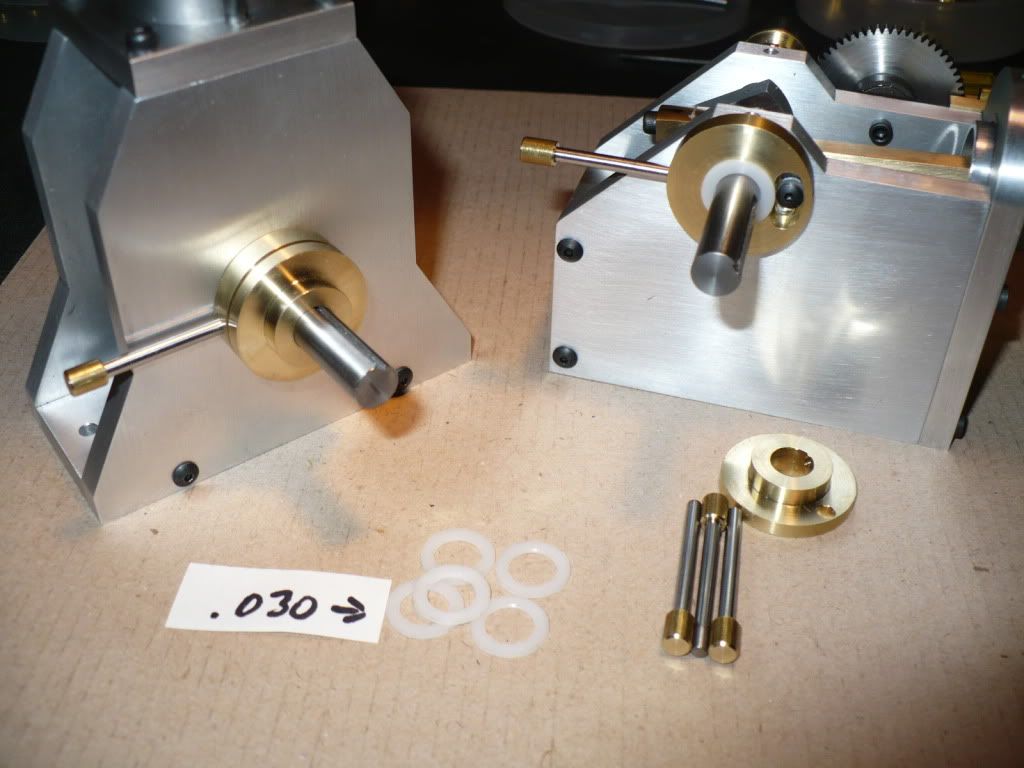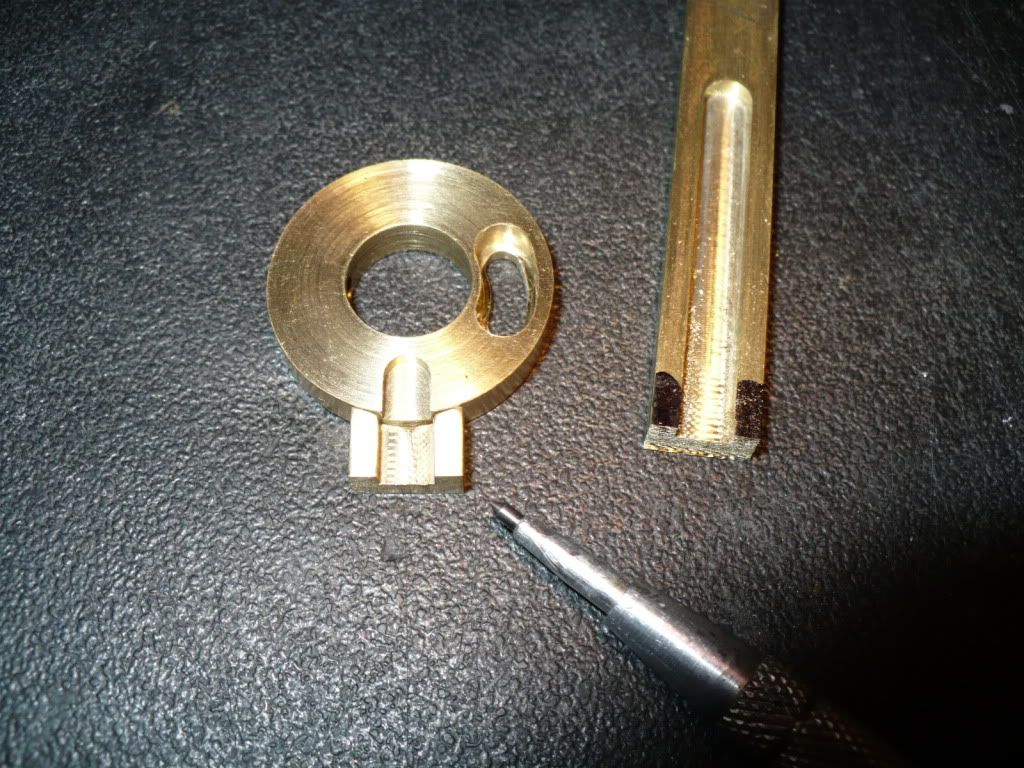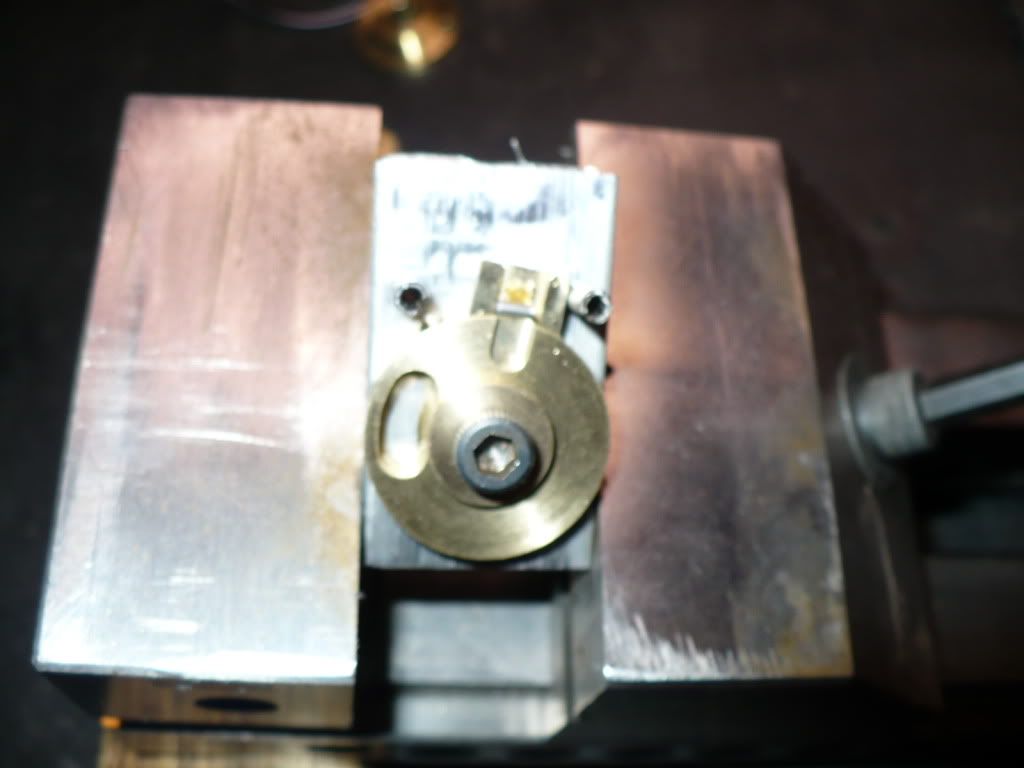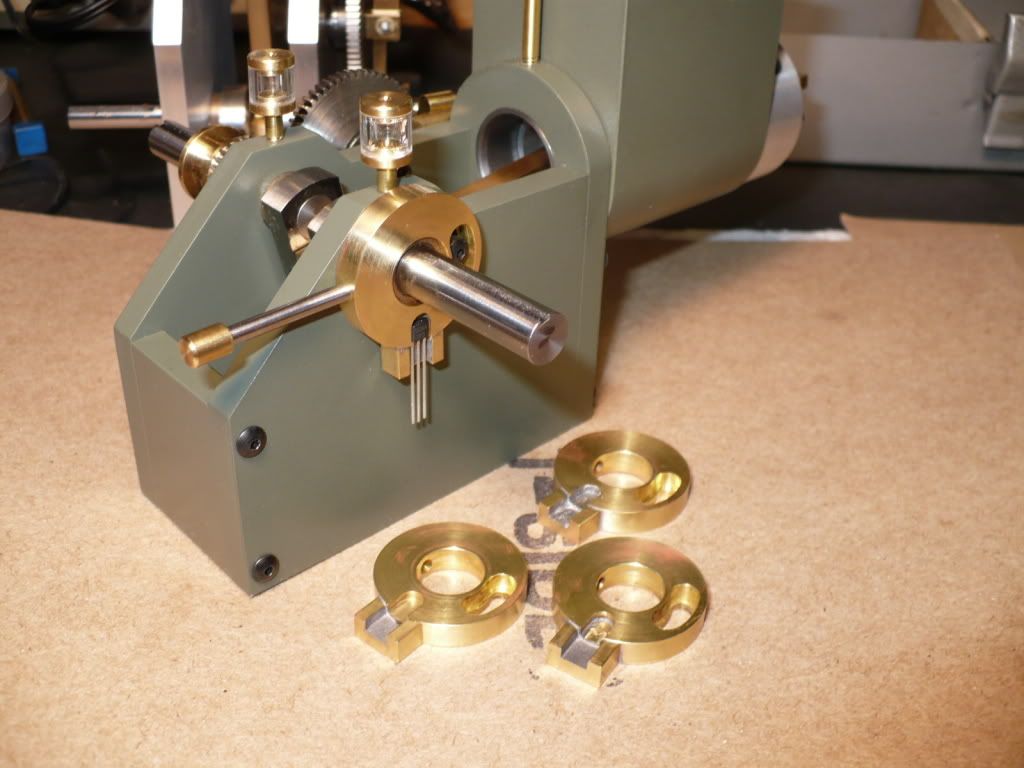#283 I had a minor set back that is the subject of the first part of today's post, and a concern about the mounting method for the Hall sensor that I address in the second part of today's post.
After not being able to find the appropriate size spring washers for the adjustable sensor carrier, I made my own out of spring steel. When I tried to add the bend (curvature) the first one broke. I managed the bend on the second one but it proved to be useless. The adjustment screw wouldn't work. It would either lock the disc in position, or the disc was to loose.
I changed my plan and decided to try making a washer from Delrin (Acetal) to see if it might work. I couldn't use a cap screw since the milled step in the slot was only .020 deeper then the thickness of the head on the screw. A button head screw would allow the washer to be more than .050" thick to give the needed compression. I had to reduce the head diameter to fit the slot that was sized for a cap screw. After making the Delrin washer I tried the idea out and found that it worked well. I had good control over the amount of restriction I could apply to the sensor disc.
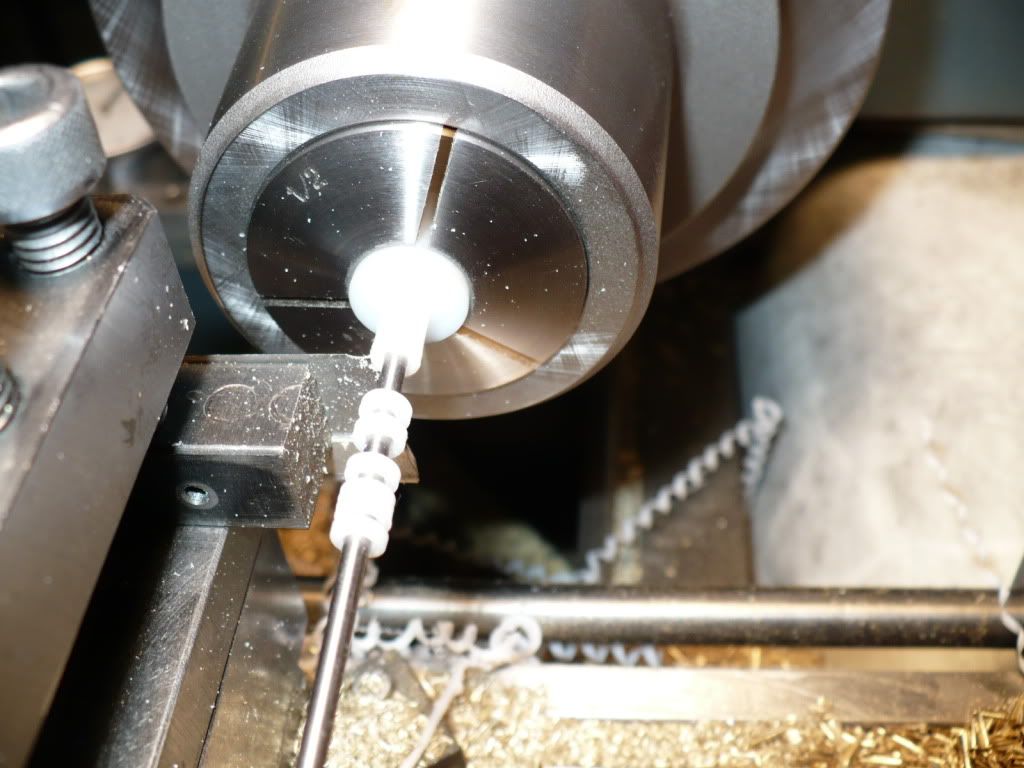
#284 To part off the rather small and thin Delrin washers I used a Razor blade as a cut-off tool. A small diameter rod mounted in the tail stock chuck was used to catch the washers as they were parted off. I used a slightly smaller diameter rod and watched my in-feed by going in to a pre-determined setting on my dial indicator to avoid running into the rod with my cutter. Sure beats bending over to pick one up off the floor.
In the picture bellow you can see the Delrin washer sticking out from under the button head screw.
#285 Below I'm drilling and tapping one of the five frame plates. Each plate was set-up individually, and I double check the location by using a .125" rod just to be sure. Wrecking a frame plate at this stage of the project would have been too much to bear.
#286 I decided to try out my idea of using a spacer to gap the magnet away from the sensor. This will eliminate fiddling with the air gap space while adjusting the magnets position relative to the crank shaft.
I also made up the adjustment rods using drill rod with a brass barrel style end. I decided not to use knurling since its not needed and its absence affords a clean and simple look. When the flywheels are added to the engines, the rather long appearance of the adjustment rods will disappear.
#287 I became increasingly concerned with the possibility of the Hall sensors becoming damaged by flexing-pressure applied to their pins during adjustments and handling. I mentioned this concern and solution in a previous reply on this thread. I didn't want to make up new discs, so I came up with a modification to achieve the same result by making the discs a build up of two parts.
I milled up some brass stock with a wider and deeper grove to accommodate insulated wires. The wires will be fixed in position with an appropriate potting compound such as silicone or epoxy. This will help eliminate the possibility of sensor damage.
#288 I used the fixture that I made previously for the mill work on the sensor disc, as a soldering fixture. Sorry that the picture came out blurred, but hopefully you can see how it was used.
#289 Below you can see the completed modifications. Two are already installed plus the three on the cardboard. I placed the solder on the added pieces which caused them to get tinned on the inside. Controlling the flow of solder can be difficult at times. Fortunately once the sensor is set in potting compound this little solder mishap will be out of sight and out of mind.
-MB































![DreamPlan Home Design and Landscaping Software Free for Windows [PC Download]](https://m.media-amazon.com/images/I/51kvZH2dVLL._SL500_.jpg)





























